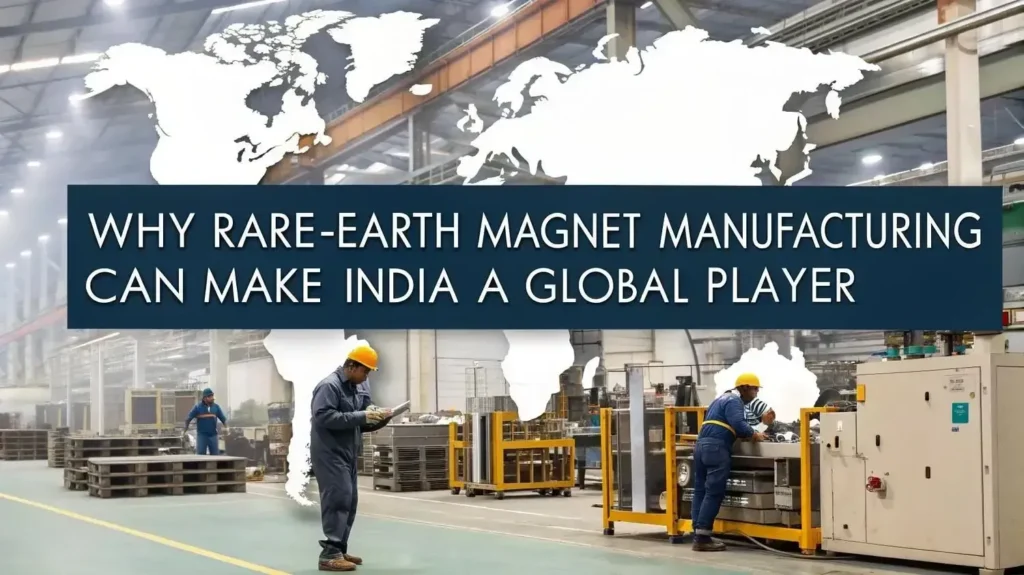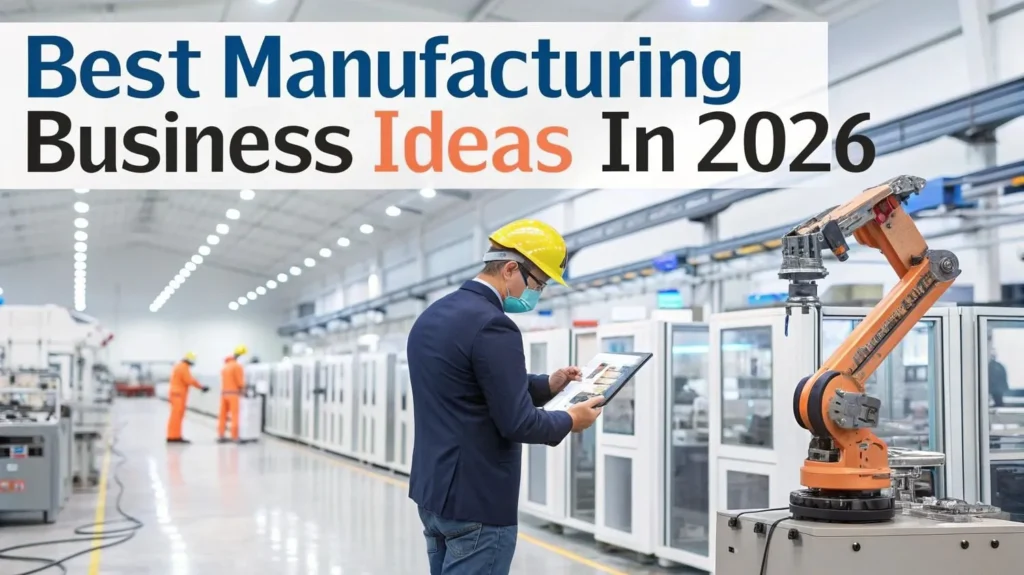Starting a ferroalloy manufacturing business in 2025 can be a rewarding and strategic investment. Ferroalloys are critical in the production of steel and other alloys, making them an essential component of the global metallurgy industry. With increasing demand from infrastructure, automotive, and machinery sectors, this business has solid potential. If you want to capitalize on the expanding steel market, setting up a ferroalloy manufacturing plant is a viable and profitable idea.
See Also : Dairy Farming & Milk Processing
Understanding the Ferroalloy Manufacturing Industry
The ferroalloy manufacturing industry produces iron-based alloys by combining iron with one or more chemical elements like manganese, silicon, or chromium. These alloys enhance specific properties in steel such as strength, resistance, and elasticity. Some commonly produced ferroalloys include ferrosilicon, ferromanganese, ferrochromium, and ferrotungsten.
India, being one of the largest steel producers globally, has a strong demand for ferroalloys. The country also has an abundant supply of manganese ore and other minerals, which makes raw material sourcing easier and more cost-effective. Additionally, government initiatives supporting “Make in India” and industrial corridors promote investments in heavy industries like ferroalloy manufacturing.
Let’s now explore the detailed process of setting up this business step-by-step.
Conducting Market Research and Feasibility Analysis
Before investing in ferroalloy manufacturing, perform a thorough market study. Understand the current demand-supply ratio, major consumers, pricing trends, and export potential. Analyze your target market—whether you’ll supply to domestic steel plants or aim for global exports.
Conduct a detailed feasibility analysis that includes technical, financial, legal, and environmental evaluations. You must know the capacity of your plant, availability of resources, expected margins, and breakeven point. Without concrete research, even the best ideas can fail in execution.
Choosing the Right Location
The location of your ferroalloy manufacturing plant plays a crucial role in your operational efficiency and profitability. Ideally, choose an industrial zone close to sources of raw materials like manganese ore, coal, and quartzite. Being near railways or ports helps in reducing logistics costs for both raw material procurement and product delivery.
States like Odisha, Jharkhand, Chhattisgarh, and Maharashtra offer excellent infrastructure and resource access for setting up such units. Moreover, some state governments offer capital subsidies, tax exemptions, and affordable land for industrial units, which can reduce your initial investment burden.
Legal Compliance and Licensing
To start your ferroalloy manufacturing unit legally, you must obtain several approvals and registrations. These include:
-
Company Registration (Private Ltd, LLP, or Proprietorship)
-
Factory License from the local labor department
-
Consent to Establish and Operate from the State Pollution Control Board
-
Udyam Registration (for MSME benefits)
-
Import-Export Code if planning to export products
-
GST Registration
Ferroalloy manufacturing involves high-temperature operations and emissions. Therefore, you must comply with environmental guidelines. Install pollution control equipment and follow all safety norms to obtain a smooth clearance from authorities.
Procuring Raw Materials and Machinery
You will need a consistent supply of raw materials like iron ore, manganese, coke, and quartzite. Establish long-term contracts with reliable suppliers or participate in mineral auctions to ensure supply security. Additionally, energy consumption is high in this industry, so plan for uninterrupted electricity or set up a captive power plant if feasible.
For machinery, invest in modern and energy-efficient equipment. Key machinery includes electric arc furnaces or submerged arc furnaces, crushers, conveyors, material handling units, and pollution control systems. Don’t compromise on safety and automation features, as they directly impact worker safety and product quality.
Furnaces are the core of any ferroalloy manufacturing plant. You can choose between closed or open arc furnaces depending on your budget and target output. Closed furnaces are more efficient and environmentally friendly but require higher investment.
Setting Up Infrastructure and Utilities
Infrastructure planning should include land layout, storage areas, office space, furnaces, and loading bays. You must also consider utilities like water supply, drainage, compressed air, and internal roads.
Install energy meters, safety devices, and waste disposal systems to comply with safety and environmental regulations. Additionally, plan your storage space for raw materials and finished goods to avoid congestion and wastage.
Hiring Skilled Workforce
Ferroalloy manufacturing is a skill-intensive process that requires qualified engineers, furnace operators, electricians, and safety officers. Invest in training your staff on handling high-temperature operations, furnace control, and safety protocols. A well-trained team ensures smoother operations, reduces downtimes, and enhances overall productivity.
Labor laws mandate certain facilities for workers, including safety gear, clean drinking water, sanitation, and periodic medical check-ups. Taking care of these needs also improves employee retention and motivation.
Production Process Overview
The ferroalloy manufacturing process typically involves:
-
Weighing and mixing the raw materials according to a defined ratio.
-
Charging the mixture into a submerged electric arc furnace.
-
Smelting under high temperature to reduce oxides and separate the alloy.
-
Tapping the molten ferroalloy into molds or ladles.
-
Cooling and crushing the solidified product.
-
Packing and dispatching the final product.
Each type of ferroalloy requires a slightly different process based on the chemical composition and end-use specifications. Continuous monitoring, sample testing, and process optimization are crucial for maintaining product quality and consistency.
Marketing and Sales Strategy
Once your production stabilizes, you must focus on building a strong customer base. Reach out to steel manufacturers, foundries, casting units, and export houses. Participate in trade fairs, exhibitions, and industrial conferences to network with buyers.
Create a detailed product catalog highlighting specifications like carbon percentage, sizing, and chemical composition. Offer competitive pricing, consistent quality, and on-time delivery to build long-term relationships with clients.
Digital marketing and B2B platforms like IndiaMART, TradeIndia, and Alibaba can also help you tap into wider markets. If exporting, comply with international packaging and quality norms to gain trust in foreign markets.
Investment and Financial Planning
Setting up a medium-scale ferroalloy manufacturing plant requires an investment ranging between ?10 crore to ?25 crore, depending on capacity and location. Major costs include land, machinery, raw material inventory, labor, utilities, and licenses.
To manage this investment, consider combining personal funds with bank loans, venture capital, or government subsidy schemes. Prepare a solid business plan with projected income, expense break-up, and return on investment (ROI). Show lenders or investors your market potential and risk mitigation strategies.
Having a contingency fund is equally important, as unexpected costs or delays can arise during setup and initial operations.
Environmental and Safety Considerations
Ferroalloy manufacturing generates solid waste, gaseous emissions, and heat. Strictly follow environmental regulations to avoid penalties or shutdowns. Install fume extraction systems, bag filters, and water treatment plants to minimize environmental impact.
Provide workers with fire-resistant uniforms, gloves, goggles, and breathing masks. Conduct periodic safety audits and emergency drills to prepare for potential hazards like furnace bursts or short circuits.
Implement a waste management policy for slag, spent refractories, and furnace dust. Some waste materials can even be sold to other industries, creating additional revenue.
Scaling Up the Business
Once your plant is stable and profitable, you can look into expanding capacity or diversifying into other alloy segments. For instance, adding ferrosilicon or low-carbon ferrochrome production can attract new clients.
Automation, ERP systems, and AI-based process controls can optimize resource usage and improve decision-making. Consider setting up a lab for R&D to develop custom alloy grades or improve energy efficiency.
Exporting to countries like Japan, South Korea, and European nations can boost your profit margins. These markets often demand consistent quality, proper documentation, and timely supply—all achievable with robust systems.
See Also : Pan Masala & Zarda
Conclusion
Ferroalloy manufacturing is a promising sector with immense growth potential, especially with the rise of infrastructure and steel demand in India and abroad. However, entering this business requires technical expertise, strong financial backing, and strict compliance with regulations.
By understanding the market, choosing the right location, investing in quality equipment, and building a skilled team, you can establish a successful and sustainable ferroalloy manufacturing unit. The journey may be demanding, but with careful planning and execution, the returns are worth the effort.
Start small if needed, but think big—because in the world of metallurgy, strength lies in vision and consistency.





